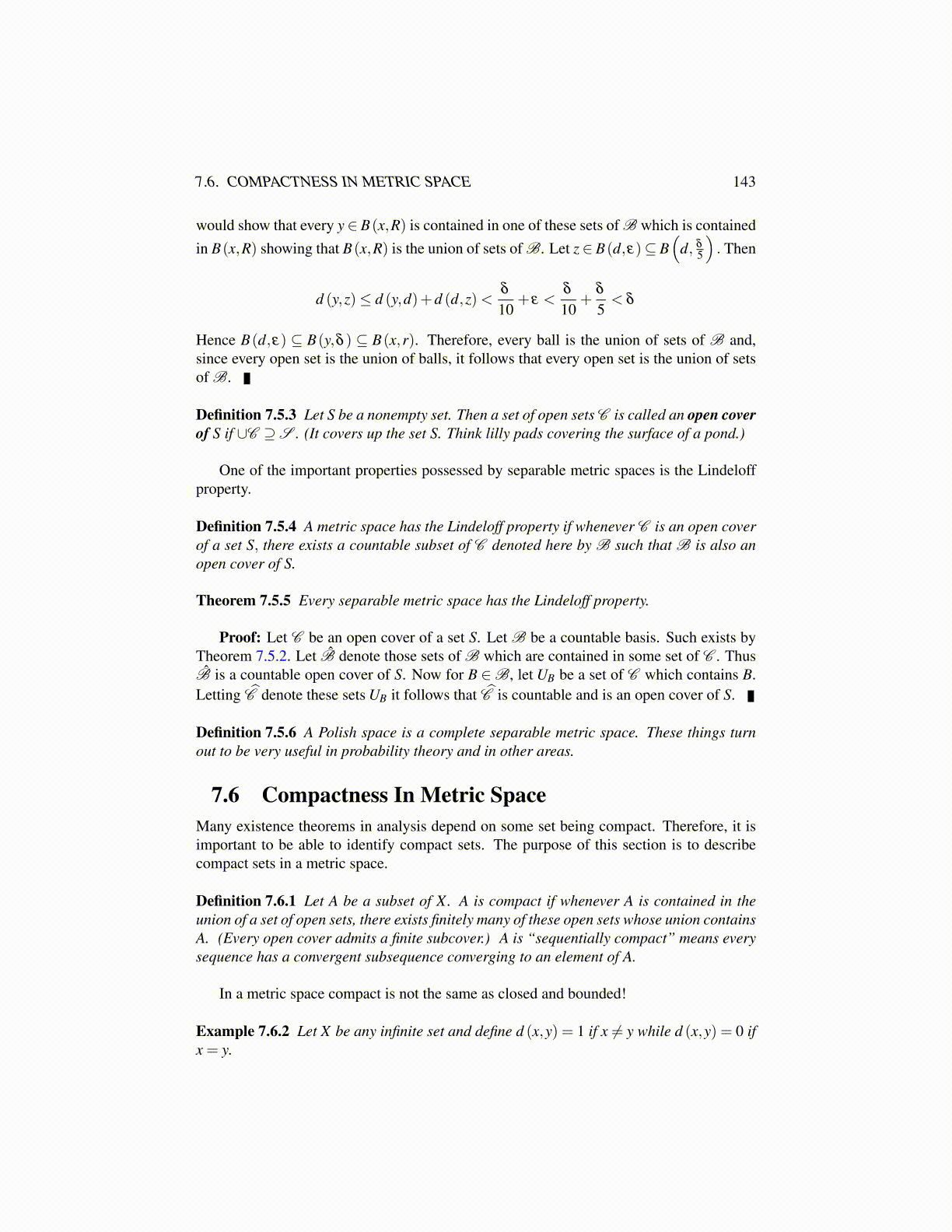
7.6. COMPACTNESS IN METRIC SPACE 143
would show that every y∈ B(x,R) is contained in one of these sets of B which is containedin B(x,R) showing that B(x,R) is the union of sets of B. Let z∈ B(d,ε)⊆ B
(d, δ
5
). Then
d (y,z)≤ d (y,d)+d (d,z)<δ
10+ ε <
δ
10+
δ
5< δ
Hence B(d,ε) ⊆ B(y,δ ) ⊆ B(x,r). Therefore, every ball is the union of sets of B and,since every open set is the union of balls, it follows that every open set is the union of setsof B.
Definition 7.5.3 Let S be a nonempty set. Then a set of open sets C is called an open coverof S if ∪C ⊇S . (It covers up the set S. Think lilly pads covering the surface of a pond.)
One of the important properties possessed by separable metric spaces is the Lindeloffproperty.
Definition 7.5.4 A metric space has the Lindeloff property if whenever C is an open coverof a set S, there exists a countable subset of C denoted here by B such that B is also anopen cover of S.
Theorem 7.5.5 Every separable metric space has the Lindeloff property.
Proof: Let C be an open cover of a set S. Let B be a countable basis. Such exists byTheorem 7.5.2. Let B̂ denote those sets of B which are contained in some set of C . ThusB̂ is a countable open cover of S. Now for B ∈B, let UB be a set of C which contains B.Letting Ĉ denote these sets UB it follows that Ĉ is countable and is an open cover of S.
Definition 7.5.6 A Polish space is a complete separable metric space. These things turnout to be very useful in probability theory and in other areas.
7.6 Compactness In Metric SpaceMany existence theorems in analysis depend on some set being compact. Therefore, it isimportant to be able to identify compact sets. The purpose of this section is to describecompact sets in a metric space.
Definition 7.6.1 Let A be a subset of X. A is compact if whenever A is contained in theunion of a set of open sets, there exists finitely many of these open sets whose union containsA. (Every open cover admits a finite subcover.) A is “sequentially compact” means everysequence has a convergent subsequence converging to an element of A.
In a metric space compact is not the same as closed and bounded!
Example 7.6.2 Let X be any infinite set and define d (x,y) = 1 if x ̸= y while d (x,y) = 0 ifx = y.